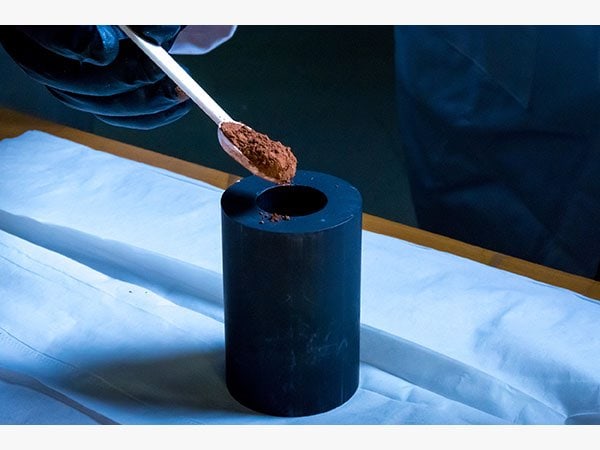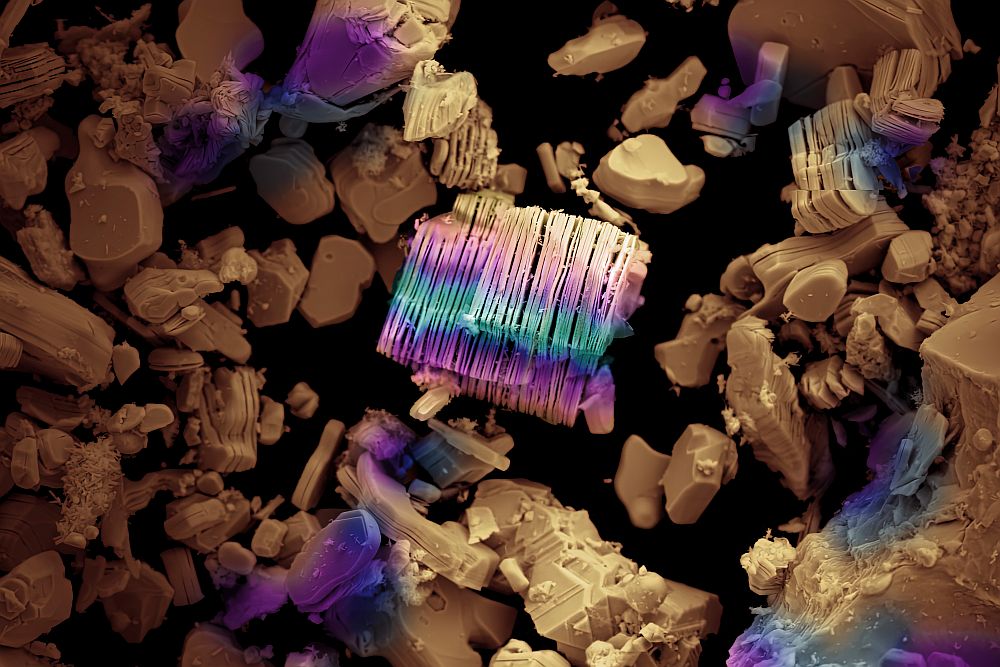
[Image above] Boron suboxide powder, which displays a range of outstanding physical and chemical properties, such as great hardness with low density, high thermal conductivity, and high chemical inertness. Credit: David McNally; U.S. Army
In our world of ceramic materials, body armor is a familiar and favorite topic. Ceramic body armor protects, it serves, it saves.
Boron carbide and silicon carbide are some of the most trusted ceramic materials when it comes to armor systems, because, well, they’re good.
So good, in fact, that it’s difficult to develop better materials—but that doesn’t mean that scientists aren’t trying.
According to a recent U.S. Army Research Laboratory news story, researchers from the lab’s Ceramic Systems team recently met with leaders from Ceramatec to discuss the possibilities of developing new ceramic materials to improve armor.
The material in question is boron suboxide, a ceramic with high hardness, low density, great thermal conductivity, and chemical intertness.
Although boron suboxide has some great materials properties, however, it hasn’t been used much in armor systems because of challenges in acquiring commercial-scale quantities of the source powders and because of difficulty processing the materials.
But ARL and Ceramatec leaders explored potential solutions to those problems during their recent meeting, the story says.
“ARL has had fruitful partnerships with Ceramatec Inc. and its parent company, CoorsTek Inc., on several previous joint S&T efforts,” Lionel Vargas-Gonzalez, ARL Ceramic Systems team lead, says in the news story. “Ceramatec expressed an interest in collaboration with ARL. The goal of this meeting was to generate a path forward for transition of ARL-led boron suboxide synthesis to a larger scale with an industry partner. Ceramatec has had a long history of successful transition from R&D to commercial, and brings a wealth of knowledge, expertise, and capability that will be crucial to developing a successful transition of our internal efforts to something that could potentially lead to the breakthroughs sought for dismounted soldier protection.”
But better materials for protecting the lives of those in the line of duty extend beyond ceramics, too. In fact, researchers at Harvard University are working towards putting a new spin on polymer protection systems.
At the Harvard Materials Research Science and Engineering Center (MRSEC), scientists are developing next generation nanofibers spun from polymers—similar to how cotton candy is spun from sugar.
In fact, according to a NSF Science Nation story, the principal investigator of the research, Army reserve lieutenant colonel Kit Parker, was actually inspired by a cotton candy machine.
Now his lab is working towards developing that technology to spin fibers for wound healing applications, bulletproof vests, and beyond. Hear more from Parker and his team in the NSF Science Nation video below.
Credit: National Science Foundation; YouTube
Author
April Gocha
CTT Categories
- Material Innovations
- Nanomaterials


